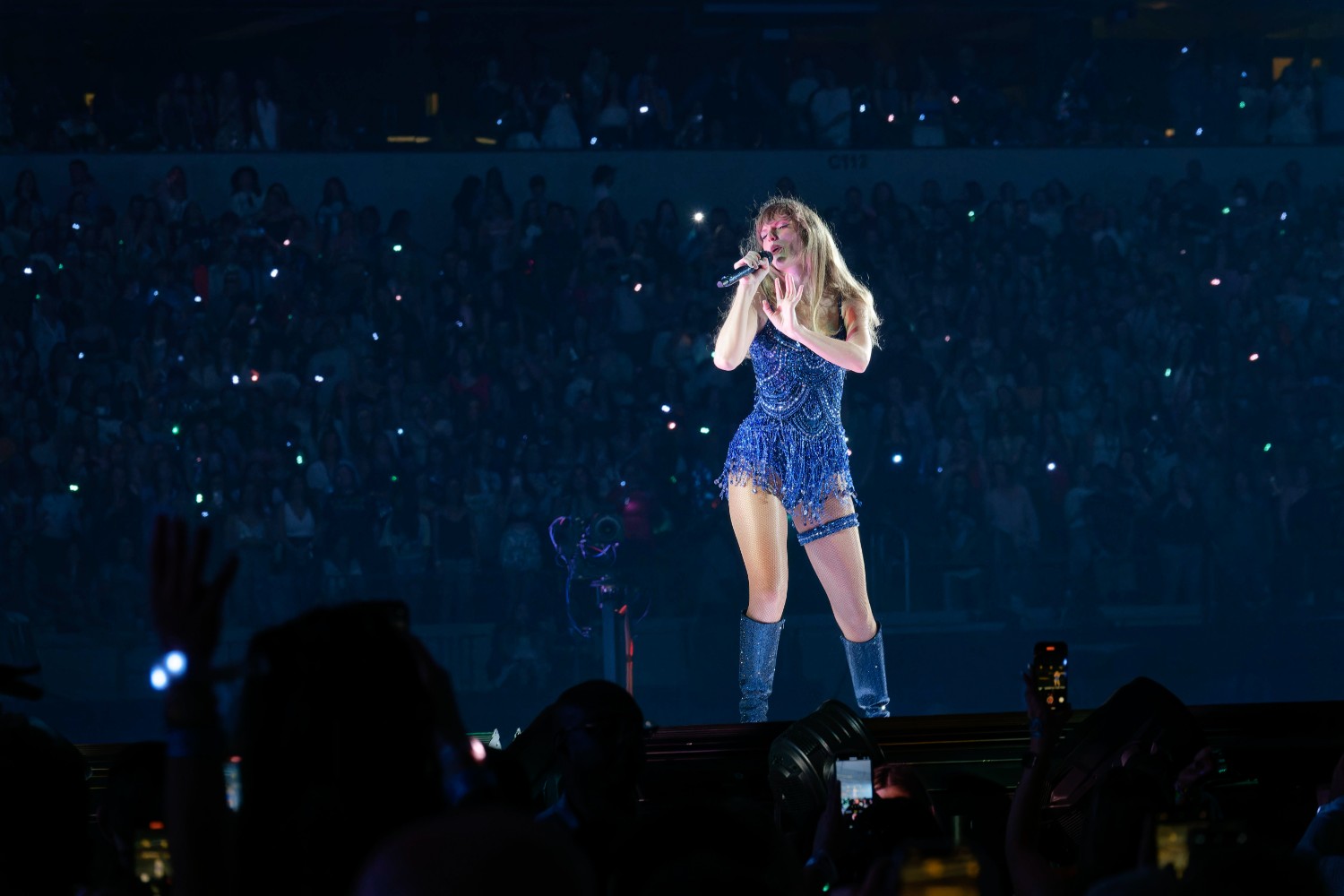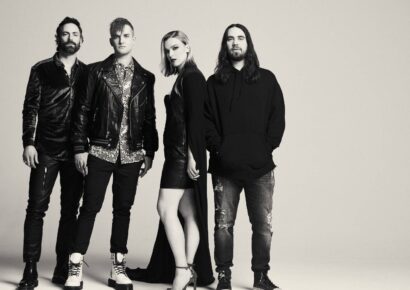What does it take to get an Eras Tour level stadium production sounding amazing?
If you’ve been living under a rock, or, you’ve somehow managed to avoid the barrage of Taylor Swift’s Eras Tour content sweeping the internet – Arena and stadium shows are back! Granted, they have been for a while but still, it’s exciting to have some of the world’s biggest artists are gracing stages once again – bringing with them some of the most impressive audio and visual displays one can experience in a live arena.
Eras Tour Australia
But have you ever wondered how is a show of this scale even possible? How is it all done?
Read up on all the latest features and columns here.
With the recent announcement of Taylor Swift’s The Eras Tour showcasing in stadiums in Sydney and Melbourne in February 2024 and Ed Sheeran’s +-=÷x (Mathematics) Tour having wrapped up earlier in the year, we thought it would be fun to do a technical breakdown of what’s involved from an audio production perspective for concerts of this magnitude. We’ll breakdown the the crew, the gear, the planning and what this all equates to come show time! So, let’s dig in.
The immensity of stadium shows is simply staggering, and they bring with them a host of technical requirements unlike any other live setting. I for one am continually blown away by the scale of production possible and common place in 2023 – it’s genuinely astounding.
Crew
A typical audio crew for a concert of this size would require a few key roles, those being the Production Manager, Front of House (FOH) engineer, Monitors Engineer and Audio Systems Engineer
This is as well as an extra healthy handful of crew including other audio techs, riggers, stage hands – the list goes on and on. While some of these roles can and will often be shared by one person (often the Production Manager will also be FOH) these positions are absolutely integral to being able to effectively manage a stadium sized show and all of its specific audio related requirements – unique to each tour.
Planning Stage/ Pre Production
Before a show is even close to being ready for deployment, a meticulous planning or pre production phase must happen in order for each piece of the puzzle to be planned out and delegated to its respective team and team members. These initial meetings will usually involve all the aforementioned senior personnel for the tour or given show, meeting with the various integral stakeholders including artist, artist management, promoter, sound and lighting systems providers etc. The show will be designed literally from the ground up, and from an audio standpoint this involves some incredibly detailed work to ensure the best possible system is deployed for the show. A hand full of brands are used for large scale concerts these days which include L-Acoustics, D&B Audiotechnik Mayer Sound, Adamson, Claire Brother and JBL. These respective brands have the product ranges available and industry reputation to meet the specific requirements of most engineers and production mangers alike. It often then just comes down to person preference as to why one brand is chosen over another.
Sound Systems
I’m going to assume that most reading this article have been to or at least seen photos of a large scale stadium concert and have likely seen a line array PA system hanging from each side of the stage. These sophisticated speaker systems are designed for maximum efficiency, projection, or throw, and accuracy. The systems unlike more old school PA rigs are not positioned on the ground in what is called a ground stack configuration, but instead are flown in the air in arrays, (sometimes also called hangs or clusters), often arching or flared in the shape of a banana. This allows for less speakers to be used but providing more coverage, with smaller a differential in volume or dB SPL across the space of the venue. This is achieved by line arrays being able to defying the Inverse Square Law, which states that a doubling of distance from a point source results in a loss of 6dB – where as a line array system will only drop 3dB. This is very useful when needing to throw sound from speakers over large distances and spaces.
In a typical end throw stage configuration (where the stage is positioned at one end of a venue and projects sound predominantly in one direction and some to the sides), there will typically be the main front of house arrays either side of the stage, which can consist of up to twenty or more speakers per hang (sometime two or more FOH hangs per side). There will usually also be side hangs which help with the coverage for audience members in the wings or higher up in seated areas to the sides of the main ground area.
To ensure the middle and back of a stadium is effectively covered, delay arrays will also be used and precisely time aligned to the FOH speakers ensuring sound from all the speakers are arriving to audience members at exactly the same time. Without this alignment the sound from the delay speaker arrays would arrive to audience members in the middle and back of a stadium before the main FOH sound and there would be an echo from the time difference between the two speaker arrays, which would be pretty awful sounding. Aside from these arrays, front fill speakers will also be used, positioned at the front of the stage so that audience members right up the front can also enjoy a great sound reproduction from the stage, which they wouldn’t get if it was just the FOH speakers based on their relative location and positioning.
We’ve covered the main speakers which will take care of the mid and high frequencies by what about the low end? Depending on the design and requirements of a particular show the amount and location of subwoofers will vary. There will usually be a main spread of subs around the front of the stage as most of use would expect and have likely experienced the physical sensation of at a large concert. Sometime subs will be flown in an array for more covered and even dispersion, usually located next to the main speaker arrays, but in a smaller hang. The development of cardioid pattern sub configurations now common place (subs are typically omnidirectional by nature and in their projection), this has allowed audio system engineers to get far more precise coverage across the full audio spectrum, so a stadium concert is able to sound far more evenly dispersed, not only in frequency but in volume. All of these speakers and subs will typically add up to being well within the hundreds, which is pretty insane! And of course this requires 10’s of thousands of watts of power to function and leave an adequate amount of headroom for the entire system to operate nominally.
As for the tuning of a system, this is typically taken care of by the audio systems technicians who will celebrate a system specifically to the space without tailored processors for that particular PA rig; with any final tweaking done by the FOH engineer from their console or outboard gear depending on the setup. Speaking of FOH consoles, the majority of large scale concerts require large format consoles, usually digital (sometimes analogue), with Digico and Avid having the lion’s share of FOH consoles out in the field.
A tightly knit team at the top of their game working with reliable, rugged tour ready gear and a carefully planned design should always lead to a successful show, no matter what the scale. But with all things audio, the larger the scale, the more potential for something to go wrong, so with zero room for error on a stadium sized show, every patch, cable run and speaker hang needs to be approached with the same level of care and detail. Thankfully, level of professionalism in the teams that work of these enormous shows is truely world class so all of this tireless work that goes on behind the scenes is most often completely invisible. So for an audience member, it’s just a matter of siting back and enjoying the show.
Find more info about Taylor Swift’s Australian Eras Tour dates here.







